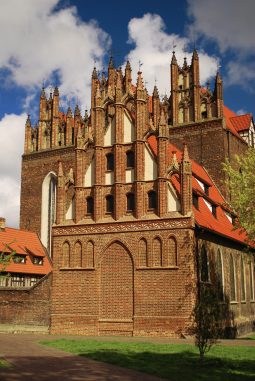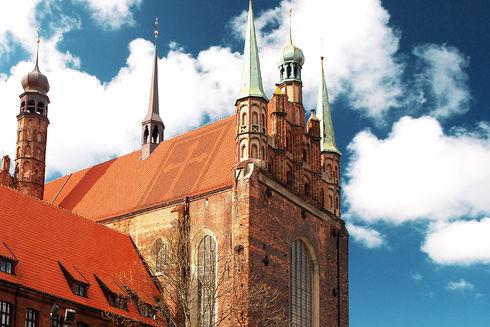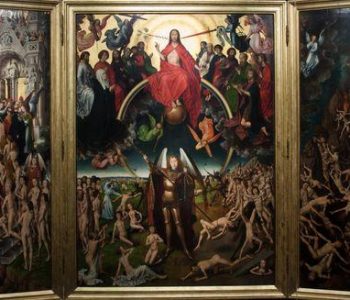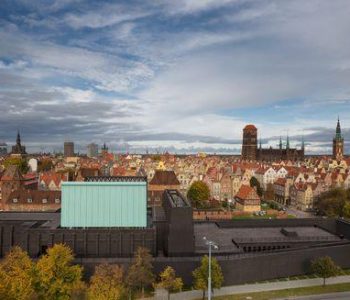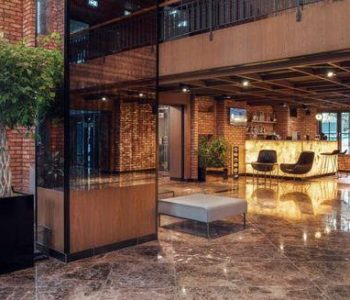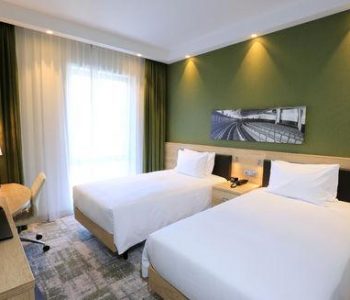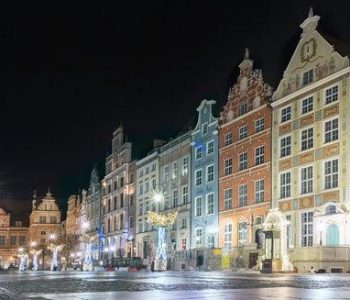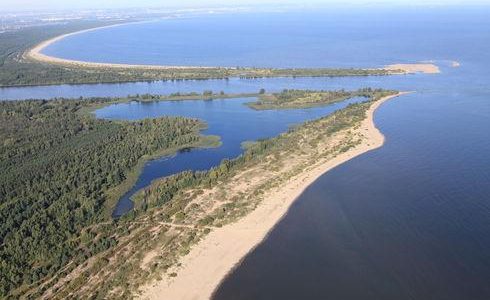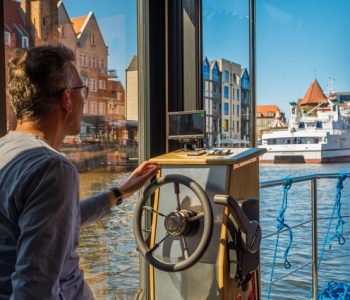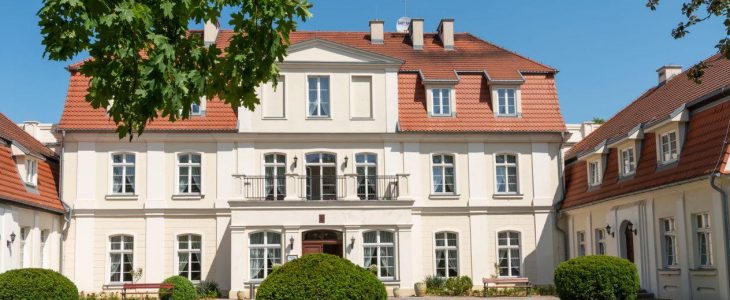It was built by the Gdańsk Franciscans. The Holy Trinity Church and its adjoining monastery comprised one of the centres, which hosted monks from various parts of the world, who also brought, besides the idea initiated by Giovanni Bernardone, i.e. St. Francis of Assisi, elements of the cultures in which they were raised.
The 16th Century arrival of the Franciscan group of monks from Wittenberg – the centre of Martin Luther’s religious “revolution” – at the monastery can be seen as the cause of the fact that it was the Franciscans who were the precursors of the reform in Gdańsk. This action was concluded with the gathering’s liquidation and the transfer of the church and monastery to the City in the year 1555 by its final guardian. This was the beginning of the various operations of the different institutions within the walls of the post-Franciscan complex.
The most important historical aspect of the monastic complex on the Suburb was its role as home to the Academic Gymnasium. This school, which fell just short of becoming a regular university, provided education to the Gdańsk intellectual and political elite for centuries, up to the year 1817.
The former Franciscan monastery was also the first home of the city library. Its foundation was associated with an Italian immigrant, who had to abandon his homeland after endangering himself with the Inquisition through his progressive opinions and sympathy for the Reformation. His name was Giovanni Bonifacio, the Marquis d’Oria. He did not take much on his long wanderings, other than an enormous number of books. He wandered around Europe from country to country, getting acquainted with people, meeting the luminaries of the erstwhile science and the leaders of new outlook movements. This was how he spent most of his adult life.
An unfortunate circumstance turned out to be beneficial to Gdańsk. The ship carrying the marquis and his book collection had a malfunction on 25 August 1591 at the entrance to the Gdańsk port and started to sink. The effective rescue operation saved not only the wanderer, but also most of his valuable collections. Tired with life, and almost blind, the Italian entered an agreement with the City, according to which the ownership of his books, almost one thousand of them, was to be handed over to Gdańsk. In return, their erstwhile owner was to be supported from the city’s treasury for the rest of his life. This was the beginning of the city library, which was initially called the Council Library, then the Senate Library, and is currently the core of the PAN Gdańsk Library. The epitaph of the Marquis d’Oria, who lived out his days in the former Franciscan monastery in accordance with the contract, can be seen to this day in the Holy Trinity Church.
During the years of the French “free city”, the church was transformed into a clothing store used by the French, after which it became a hospital, together with the monastery. The French had a hay storehouse in the largest room of the monastery. The military and hospital designation of the monastic buildings was also preserved when the rule of Gdańsk was returned to the Prussians.
The changes for the better began with the appearance of Rudolf Freitag from Wrocław in the old walls of the monastery halfway through the 19th Century, a sculptor and enthusiast of “antiquity”, as was the erstwhile definition of relics. He created a sculpting workshop in the partially-ruined monastery and began to collect everything that was removed from the middle-class homes due to “going out of fashion”, in which Freitag saw the beauty of the antiques. The collection grew and transformed into a private museum. The support of King William IV of Prussia allowed the transfer the monastic buildings to the city and the “top-down” authorisation of the presence of Freitag and his collection within their walls. The City Museum was officially opened in 1870.
The National Museum of today, which is the successor to the former City Museum, is a treasury of works of art, including those created in faraway countries and representing the leading cultural trends of various parts of Europe. However, the most famous, due to the fame of the author, artistic force and unique history, is Hans Memling’s “The Last Judgement” triptych. This painting arrived in Gdańsk as a war trophy of the most famous Gdańsk sailor of all time, Paweł Beneke, who captured it in a sea battle at the mouth of the Thames in 1473, during the war between The Hanseatic League and England, of which Gdańsk was the initiator and active participant.
The St. Anna’s Chapel adjoining the Holy Trinity Church was founded as a church for the Poles residing in Gdańsk, and in time began to gather Polish evangelicals. Its pulpit, the 18th Century work of Paul Karde from Frankfurt am Men, is decorated with religious inscriptions in the beautiful Old Polish language. After the war, the copy of the Our Lady of the Gate of Dawn painting created by the Malinowski Company from Vilnius, which arrived in Gdańsk with the Vilnius Franciscans, was placed in the chapel’s altar.
Galeria
Warning: Attempt to read property "ID" on array in /home/klient.dhosting.pl/intui/pomorskie-travel.intui.eu/public_html/wp-content/themes/pomorskie-travel/single-poi.php on line 163
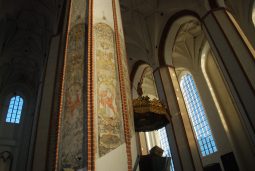
Warning: Attempt to read property "ID" on array in /home/klient.dhosting.pl/intui/pomorskie-travel.intui.eu/public_html/wp-content/themes/pomorskie-travel/single-poi.php on line 163
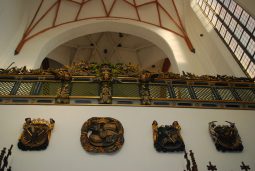
Warning: Attempt to read property "ID" on array in /home/klient.dhosting.pl/intui/pomorskie-travel.intui.eu/public_html/wp-content/themes/pomorskie-travel/single-poi.php on line 163
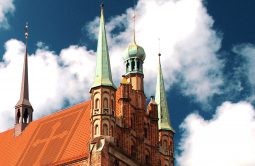
Warning: Attempt to read property "ID" on array in /home/klient.dhosting.pl/intui/pomorskie-travel.intui.eu/public_html/wp-content/themes/pomorskie-travel/single-poi.php on line 163
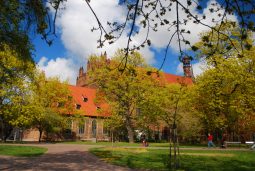
Warning: Attempt to read property "ID" on array in /home/klient.dhosting.pl/intui/pomorskie-travel.intui.eu/public_html/wp-content/themes/pomorskie-travel/single-poi.php on line 163
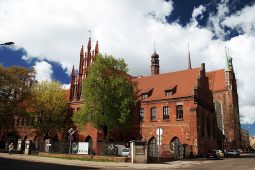
Warning: Attempt to read property "ID" on array in /home/klient.dhosting.pl/intui/pomorskie-travel.intui.eu/public_html/wp-content/themes/pomorskie-travel/single-poi.php on line 163
